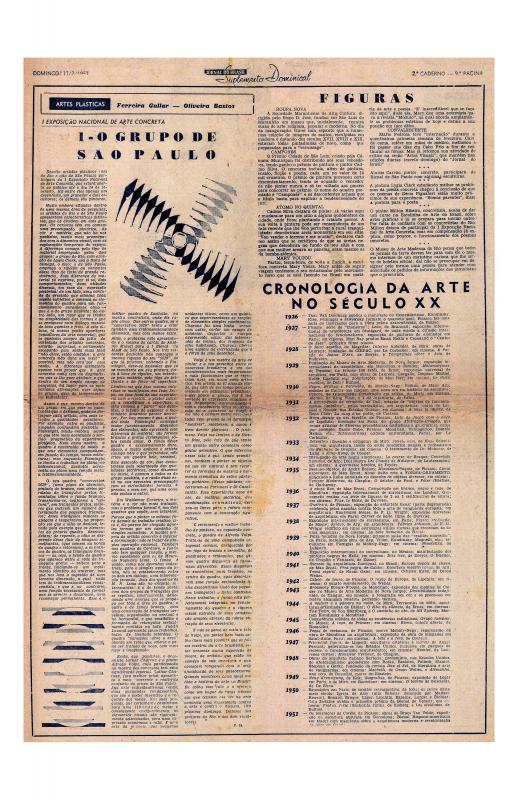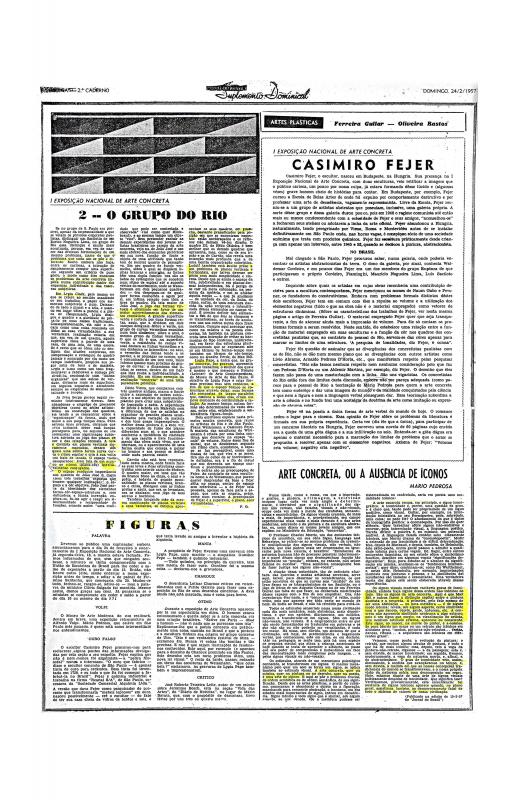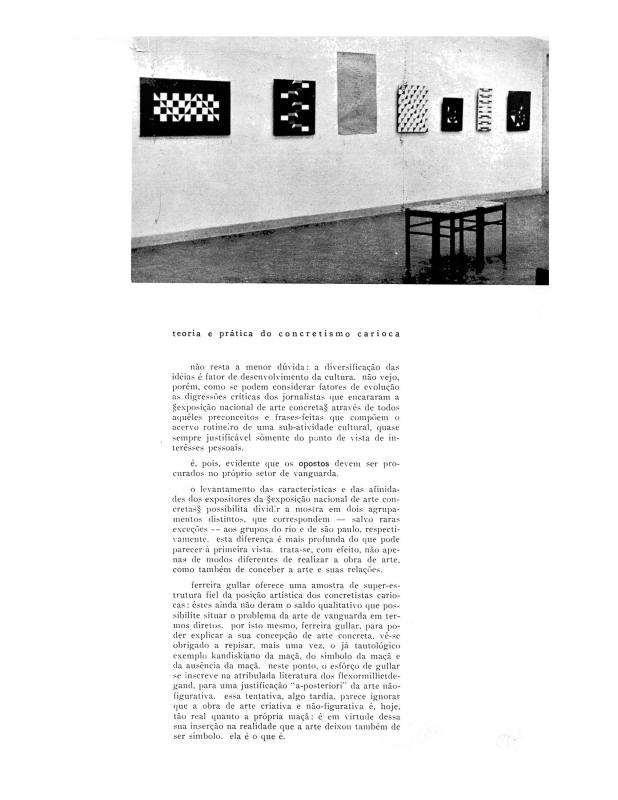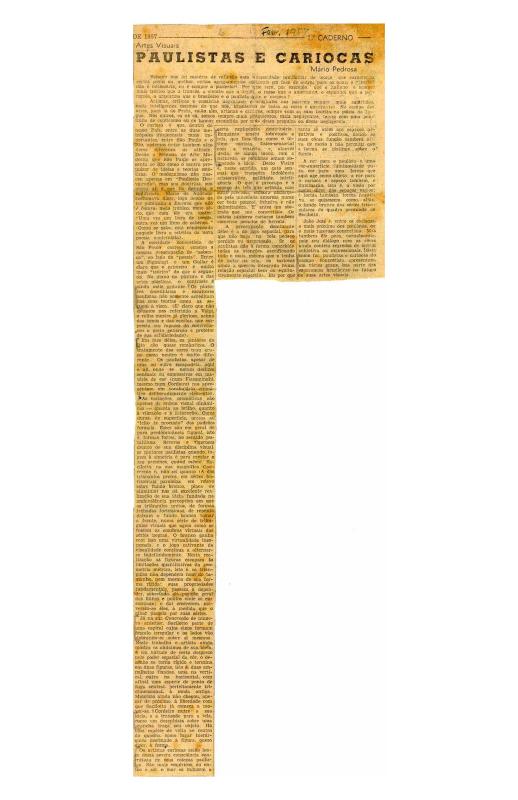During the 1940s, Mário Pedrosa and architect Guilherme Mindlin were the great proponents of Alexander Calder’s work in Brazil. This text (1948) was published for the individual exhibition of the American artist at the MAS (Ministério da Educação e Saúde) headquarters in Rio de Janeiro and later, at the MASP (Museu de Arte de São Paulo). This is one of three essays that Pedrosa wrote on Calder, written in 1944 when he was still based in the United States, later included in his book Arte, necessidade vital (1949). Here the critic praises his use of industrial materials, as well as his unorthodox abstraction and constructivism, not playful but functional in nature, which Calder integrates with the everyday. These characteristics could later be found in other artists connected to the critic (Lygia Clark and Abraham Palatnik, among others); this points to Calder’s possible influence on Brazilian artists of the constructivist trend during the 1950s.
[For more on this topic, see the following texts in the ICAA digital archive: by Ferreira Gullar “I - O Grupo de São Paulo: I Exposição Nacional de Arte Concreta” (doc. no. 1087166) and “I Exposição Nacional de Arte Concreta: 2 - O grupo do Rio” (doc. no. 1090217); by Waldemar Cordeiro “Teoria e prática do concretismo carioca” (doc. no. 1087287); and by Mário Pedrosa “Paulistas e cariocas” (doc. no. 1085056)].
Mário Pedrosa (1900–81) was an intellectual and politician, and undoubtedly the key theoretician and critic on Brazilian art of the 20th century. He began as an international politics correspondent for the Diário da Noite, and beginning in the 1920s he was affiliated with the PCB (Communist Party of Brazil). He was imprisoned in 1932 because of his political militancy (Trotskyism). During the Estado Novo of Getúlio Vargas, he lived in exile in France and New York, and only returned to Brazil after the Second World War, when he worked for the Correio da Manhã. His stance against Stalinism led him to found the Vanguarda Socialista, a weekly publication. He presented a thesis on aesthetics called “Da natureza afetiva da forma na obra de arte” (1949) at the School of Architecture (Rio) that made use of his philosophical background, and his knowledge of Gestalt psychology; during that time he was also one of the founders of the AICA (1948) and also organized the International Conference of Art Critics (Brasilia, 1959). He wrote an arts column for the Tribuna da Imprensa (1950–54) and was an organizing member of the II and III São Paulo Biennials (1953 and 1955), later becoming director of the MAM-SP (1961–63). He served as secretary for the National Council of Culture during the brief government of Jânio Quadros. During the military dictatorship he took refuge in Chile, where he became director of the Museo de la Solidaridad in Santiago; after the Pinochet coup (1973), he left for Havana, where he served as secretary for the Museo de la Resistencia Salvador Allende. He only returned to Brazil in 1977 (at the beginning of the amnesty) and was the first to sign the manifesto creating the PT (Party of Workers, 1980). His vast library (which included eight thousand volumes) is partially available at the national library in Rio de Janeiro.




